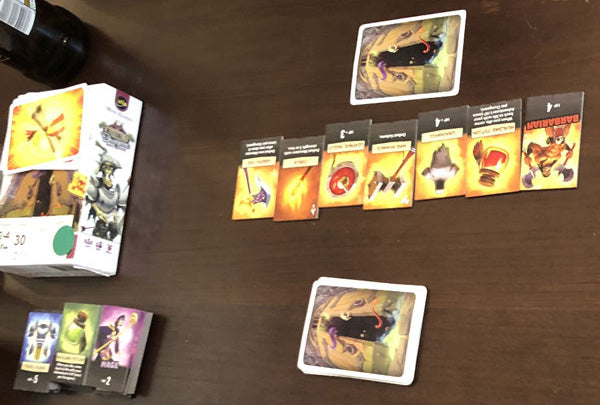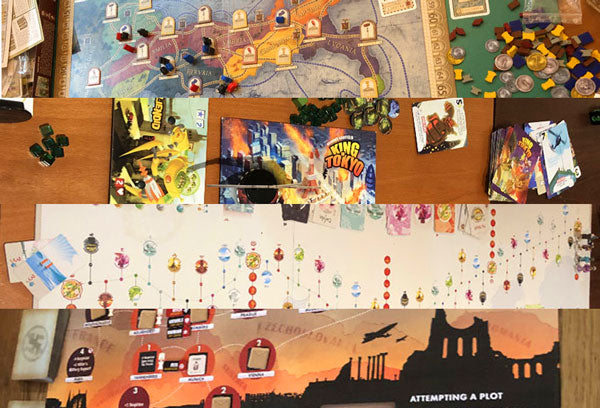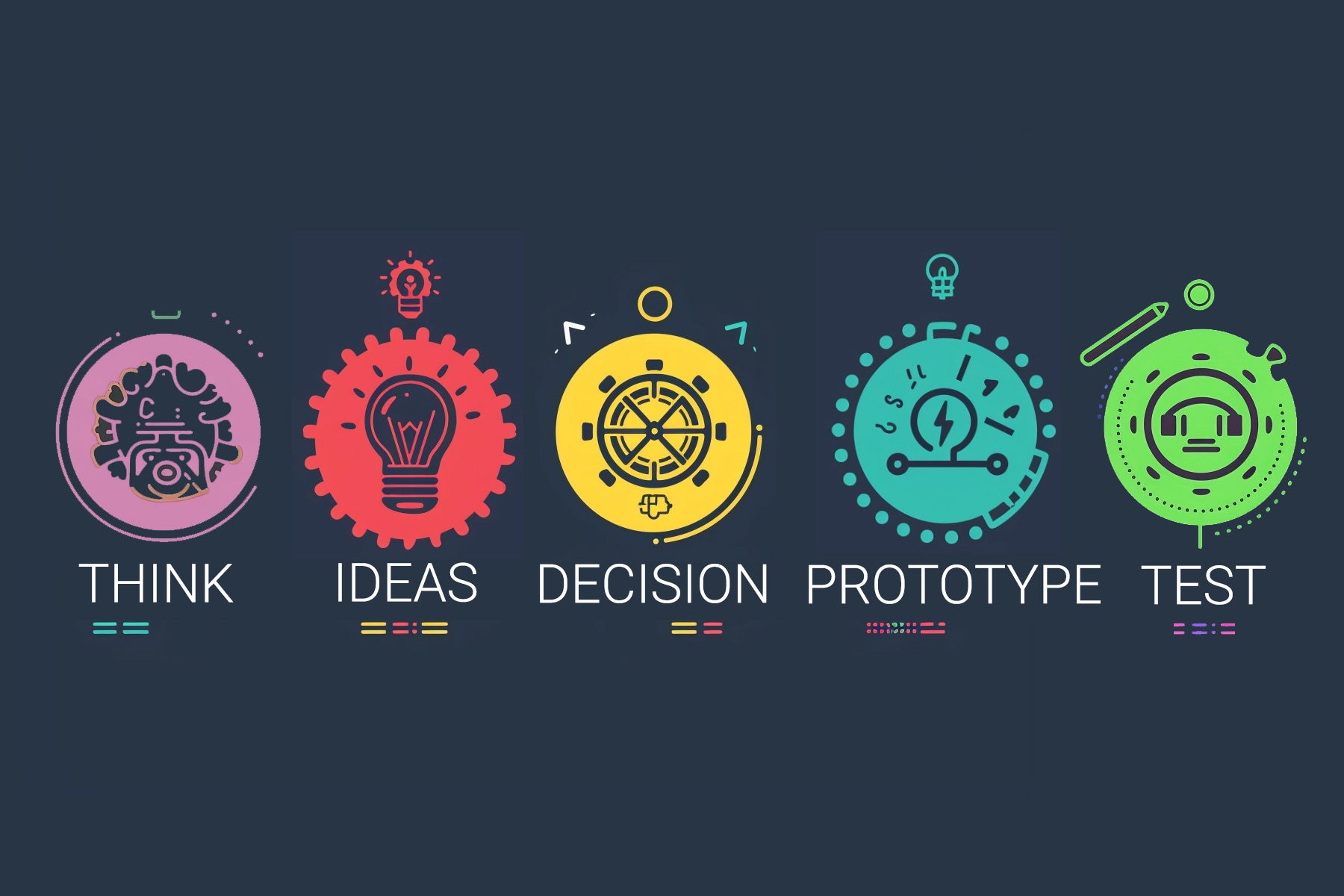Purpose
The purpose of icebreakers is to bring people together, familiarise them with each other, put them into the zone and basically break the ice as the name suggests. The purpose of team building activities is to bring the teams together, get them to go through a shared experience, solve problems, make decisions, manage limited resources and usually work against time. To address both, you can take advantage of great educational and entertaining tools in the form of board games.
You can use board games for many training purposes. Some games last long which help to bring a team together and some can be quite short which could be ideal to break the ice. There are cooperative games, competitive games, or even games that don’t have a winner, but just one big loser! Some games abstract down the real world in such imaginative ways that become incredibly rewarding to experience. As such board games are great if you want to create a memorable event which is also educational as this is what many traditional team building games aim to achieve.
In this comprehensive article, you will be introduced to several hand-picked board games that you can use in a training environment to address a variety of topics.
What Do You Want to Achieve?
Board games are going through a great resurgence. Gone are the days when you only had access to a limited number of popular games like Ludo, Monopoly, Risk and Battleship. In the 70s and 80s, there were only a handful of games available in the market and everyone knew what they were because you could find them in almost any toy shop. Nowadays, sophisticated board games are invented almost daily. Teams of designers, artists and testers constantly working to design the next cool game. There are numerous Kickstarter projects attracting supporters behind various board game projects. Some can raise as much as half a million dollars before the game even ships! As such, the games have become vastly better and with novel mechanisms at play.
Board gaming for training should be facilitated by you. You should consider using board gaming in conjunction with other team building activities along with debriefing to get the full effect. Otherwise, you might just ask the delegates to play a board game in their own time. That would work as a social activity, but it would not be a team building one. The intention with team building and icebreakers is to get delegates go through a controlled experience together and learn something new about each other. As a result, the choice of games and the debriefing that follows is important.
What Guidelines Should You Consider?
On Timing:
Bear in mind that icebreakers on their own should not take more than 15 minutes. Hence, a typical board game can be too long for an icebreaker unless you choose a very short one. However, combined with team building, especially if you are building a new team where people don’t know each other yet, it’s a safe and fun way to get people share an experience.
On Number of Players:
An average board game has 4 to 6 players. There are games that can be played with 10 or 20 players and this is usually the case with smaller games. Depending on the number of delegates you need to decide how to divide them. It is best if they all play the same game even if you divide them into multiple groups. The reason is that this way, at the end of the game you can have a shared discussion on what happened which can be related it to training topics such as decision making, resource management, problem solving, creativity, strategy, persuasion skills, leadership and so on. If delegates play different games, the debriefing becomes much harder. Besides, different games can have significantly different length. What would others who finish earlier do? There would also be the problem of some people preferring to play one game and not the other.
Basically, you don’t want to turn the training session into a board gaming club event. Your focus, instead, is to boost the educational value of the exercise.
On Rules:
As a facilitator, you need to know the rules of the game inside out. When getting others to play a game, especially as part of an icebreaker or teambuilding, its best if you know the rules by heart. This accelerates the process of teaching and minimises the time it takes to run the exercise.
Ideally, you should have played the game with family and friends at least once before getting any delegates to play it in a training course. This way you will know what questions will be raised, how the game progresses and most importantly if the game is useful for them to play.
On Instructions:
Ideally, you should play with your delegates if they don’t know the game. Each game must have at least one person who knows the game well. This is because you cannot be expected to explain all the rules in one go as it is too much content for delegates to take in. Instead, it is best if the overall structure is explained before starting and during the first round, a few more detailed rules are revealed as players become more familiar with the game. What you cannot do is to explain a game to one group, leave them to play and go on to attend another group. Mistakes can easily happen when unchecked and no one enjoys participating in a game when towards the end they realise they have been doing something wrong all along. They can refer to rule book on their own, but this can take a significant amount of time and is usually done by one person; so others would simply sit around chatting.
If you have many delegates, see if anyone already knows the game. You can assign them to lead gaming groups while you attend one yourself. If you don’t have anyone who knows the game, consider running multiple parallel games. Pick short and uncomplicated games in this case. Roam from group to group to help out.
How to Choose the Right Game?
When choosing, select games that:
- Are entertaining
- Bring people together through an interesting shared experience
- Are beautiful abstraction of a real-world activity, related to what you want to teach
- Are intriguing and multifaceted
- Can have complex rule sets specially for longer games which is a great exercise in active listening, comprehension and memory when people need to learn the rules
The games listed here are handpicked specifically for training. Dr. Honary, the founder of Skills Converged, is an avid fan of board games and the list of games presented here is curated by him.
The board game market is very dynamic and new games are introduced all the time. This list will be updated periodically to capture the best board games for training, helping you use the list as a starting point when searching for a board game.
All games are grouped into three main categories for your convenience:
- Short Games / Easy to Learn
- Longer Games / More Comprehensive to Teach
- Cooperative Games
For each game the following is provided:
- Timing and number of players
- A short explanation on what the game is about
- What makes the game interesting
- What areas it can cover when used in a training environment
Short Games / Easy to Learn
In this group, you can explore games that take less time to play, take less time to teach and are generally uncomplicated. As such, they are best suited as icebreakers, or even energisers. You can of course use them for team building too.
For Sale

Players: 3-6 Players
Timing: 30 min
What Is it About:
In this game, you buy and sell real estate. You will bid for several building and after buying them, you sell them for the greatest profit possible.
What Makes it Interesting?
The game is a great abstraction of bidding process and the aim is to make more money. This game is easy to teach and quick to play.
What Does it Cover in Training?
This game is great for decision making, resource management, market dynamics, bidding, memory, card counting and probability.
Timeline

Players: 2-8 Players
Timing: 15 min
What Is it About:
In this game you need to guess the order of historical events and compete with other players to accurately make guesses. There are other game variations by the same designers such as World History, Inventions, British History and Music and Cinema.
What Makes it Interesting?
The beauty of this game is that even if you don’t know the exact timing of an event, you can make informed guesses which often make all the difference in winning or losing the game. This game is extremely easy to teach; you only need a few minutes. It is also uncomplicated so you can teach everyone at once and then let many groups play in parallel without further need for your guidance.
What Does it Cover in Training?
This game is great for learning history, decision making and guesswork in the absence of factual data.
Welcome to Dungeon

Players: 2-4 Players
Timing: 30 min
What Is it About:
In this game, you dare each other to go into a dungeon. The dungeon is a dangerous place, the monster may overcome you and you could die. You only have two lives; if you die twice you are out of the game. The problem is that in each turn other players, including yourself, may boost the power of the monster making it even more difficult to survive the dungeon.
What Makes it Interesting?
This is a great game to teach risk taking. Any player can easily survive by not entering the dungeon, but then they won’t gain any points and will not win. A player must take risks in order to win. This game is easy to teach.

What Does it Cover in Training?
The game is about the balance between taking risks to win at the right time, versus letting others enter the dungeon and face their demise. You can teach many topics on business training using this simple and relatively quick game.
This game is useful to cover topics such as persuasion skills, guessing what players do, memory, card counting and risk taking.
Buy Welcome to Dungeon from Amazon
King of Tokyo

Players: 2-6 Players
Timing: 30 min
What Is it About:
This is a fun game that is guaranteed to entertain delegates and make them laugh. It resembles the classic Japanese Godzilla movies where you fight a monster to kick it out of the city (namely Tokyo). Except that in this game, all players are monsters! You can attack other monsters, heal yourself, energise yourself or boost your abilities. You can attack and overcome a monster in Tokyo and replace it but this will make you a target of all other players outside Tokyo.
What Makes it Interesting?
The game is therefore a matter of dealing most attacks while avoiding theirs, healing yourself quickly, boosting your abilities for special powers and gaining energy so you can use those powers. It is a fast-paced game where players are encouraged to be active and not to hold back. The game rewards a player that is consistent, focused on gaining victory points and not greedy. Staying in Tokyo gives you points but at the risk of getting blows from other players; linger too long and you may never recover.

What Does it Cover in Training?
This game is great for teaching risk taking. Use it to cover topics such as resource management, quick decision making, persuasion, negotiation and probability. This is also a good game to explore emotional intelligence. Players need to decide if it is worthwhile to attack someone with the potential that may get harmed in return. There could be revenge. A weak player could be attacked by other opportunistic players and so on. Because the game is beautifully light-hearted, players never feel threatened. Hence, it is an ideal setup to explore soft skills. What can you say to persuade someone not to attack you? What can you say to get them have mercy on you when you are extremely weak and about to be eliminated? What to say to avoid other players ganging up on you?
Codenames

Players: 4-8 Players
Timing: 15 min
What Is it About:
This is a popular party game. It is easy to teach and quick to play, which is why it has a wide appeal. In this game, two teams compete. Each team has a spymaster and the rest of the group are field operatives. Each team has several agents with codenames. The spymaster of each team needs to say a single word that help the field operators contact as many of their agents as possible based on their codenames, and at the same time should avoid the opponent team’s agents. There is also an assassin on the lose which if encountered results in an instant failure of the mission and a lost game.
What Makes it Interesting?
Since teams play against each other, it is less confrontational in a sense that it is no longer an individual that loses. The spymaster and field operatives need to work together and be able to read each other’s minds. This further helps to create a bond, breaking the ice and bringing people closer together.
What Does it Cover in Training?
Being a short easy game, this is ideal as an icebreaker. If you have time, you can mix up the groups and let them have another go playing with different people.
Longer Games / More Comprehensive to Teach
These games require more time and take significantly longer to teach. Some games may take 30 min just to teach so you need to allocate enough time for them. They are however much more complex, require a sound strategy and are generally deeply satisfying. You certainly cannot go wrong with the entertainment value though you will have to choose the right one for your specific training needs.
Several of these longer games use ‘engine building’ as a mechanism to progress forward. In engine building game, you typically need to use your initial resources to create an engine, or momentum, that helps you to acquire more resources in subsequent turns. As such, a player who can create a strong engine can catch up with others at the end, but similarly you can waste too much resources on a powerful engine before you get a chance to cash it in. This mechanism is incredibly useful for courses on team building, decision making and resource management.
Concordia

Players: 2-5 Players
Timing: 100 min
What Is it About:
This is a game based in ancient Rome. In the standard map, there are 12 provinces that you can colonise. You can settle in various cities which subsequently give you resources such as bricks, wheat, metal, wine, and clothes. Your actions are limited by the action cards you hold. You can gain actions by purchasing the cards. Some actions help you colonise faster, or gain more resources as a guild, or you can use consuls to purchase actions cheaper. A diplomat action helps you copy what others do and hence you can gain what they gain. Overall, it is an intensely strategic game. To win, you must also appease the ancient gods to help you gain those crucial victory points. Despite being based on Roman history, Concordia is a peaceful game with not much conflict between the players. It has an engine building mechanism. There is competition in fast colonisation and subsequent access to cheaper settlements. There is also competition in grabbing the next useful action card before others do. The game requires planning and you must play your overall moves across several turns while staying vigilant on how the state of the world changes.
What Makes it Interesting?
The game is a classic for any strategy lover. If you lose you always know what you should do better next time to gain more victory points and if you win, you can never be assured that you will do just as well next time, since it depends on how others play. So, you must always do your best to win.

What Does it Cover in Training?
This game is ideal for team building, resource management and goal setting. It takes more than a single game to become better at this and hence after the first game, most people feel they would like to have another go in the future. This is ideal if you want to bring a team together and make them feel they shared an interesting experience. It helps them to look forward to doing something fun in the future.
Istanbul

Players: 2-5 Players
Timing: 40-60 min
What Is it About:
This is great strategy game with a universal appeal. You are a merchant in Istanbul and your aim is to collect six rubies; the first player to do so wins the game. As a merchant, you have several assistants that do your bidding along with family members that help you out when you are tangled up through your own actions. You have a cart to fill up to capacity with resources such as fruits, spices, gems and fabric. You move around Istanbul to collect resources, sell your resources at the market and get cash, extend your cart capacity, buy gems, acquire more assistants or simply gamble in tea houses to gain the much-needed cash.
What Makes it Interesting?
This is an engine building game that requires careful planning for a few moves ahead. This is not a forgiving game if you don’t plan since each move can restrict your future moves. Chasing short term gain can quickly lead to trouble. Just as you prepare yourself to snatch the next ruby, you find yourself unable to do a useful move that gets you there; you then quickly fall behind other players.
What Does it Cover in Training?
As an engine building game, this is ideal for team building, resource management, decision making and goal setting. It is also great for risk and probability calculations and strategic decision making. The gambling tea house is particularly useful for you. How often should you gamble? What number should you call out to guess the dice roll? Is it worth to get the resources if you win the gamble, since the markets can change by the time you want to sell it? You can also change the Istanbul map to many new configurations which keeps the game fresh for a replay.
Dice Hospital

Players: 2-4 Players
Timing: 45-90 min
What Is it About:
In Dice Hospital you have a continuous stream of patients and you are in charge of getting them healthy and discharging them so you can attend to the next batch of patients brought in by ambulances. Patients are represented by a dice. The number on a die represents how healthy a patient is (1 is nearly dead). You gain resources as you discharge healthy patients from your hospital (reaching 6). With these resources, you can extend your hospital with various surgery rooms, labs and the like.
What Makes it Interesting?
It is a nice abstraction of a hospital environment. It is however a tense game as patients keep piling up and you always feel your hospital is nearly full and there is a constant lack of resources! Sometimes it feels like you are forever b fighting a losing battle but somehow you survive and keep attending to wave after wave of patients. Anyone in a hospital environment can easily connect with this game.

What Does it Cover in Training?
This is a good game for team building, working under stressful conditions and focusing on the end goal. It has elements of ‘action drafting’ which means that some actions taken by a player can prevent other players to take the same action and that there is a limit on how many times you can take an action in the game. For example, you may be able to conduct surgery on only two patients per turn and so you should allocate the surgery for the critically ill patients; but what if you have more patients in critical conditions than your surgeries. You must do forward planning, have a strategy for hospital expansion, hire the right specialists, and so on. Use this game for training course and teams where learning about optimisation, critical decision making, and strategic management is important.
Wingspan
Players: 2-5 Players
Timing: 40-70 min
What Is it About:
This is an engine building game ideal for ornithology enthusiasts, birdwatching and bird lovers. You have access to three habitats: forest, grassland and wetland. In each turn, you can either gain food, gain more birds, place birds in habitats or lay eggs. A variety of factors can influence your strategy on getting the right type of food, complete missions, gain competitive scoring or simply lay a lot of eggs. The game is beautifully designed and is a great abstraction of the world of birds.
What Makes it Interesting?
At its core, this is a game about resource management. Much of the game is about finding food, and not just any but the right type of food, i.e. one of rodents, fish, seeds, worms, or fruits. You need food to place the birds in habitats. You need to gain birds with special powers. And you need to lay eggs. You can only do one action each turn. As such in order to succeed you need to have a plan three or four turns ahead which can also be disrupted by other players competing for the same resources as you. Since you gain your final score through many different channels, no one knows how well they have done until the scored are calculated at the end. This is exciting for some players.

What Does it Cover in Training?
Use this game for decision making, planning, attention and focus, goal setting and team building. It is a light-hearted game and rather cute. If it was a short game, it would been ideal as an icebreaker but being long makes it best for team building.
Tickets to Ride

Players: 2-5 Players
Timing: 30-60 min
What Is it About:
In this game, players receive mission cards telling them which routes they need to connect with trains. The missions are secret. Players will then embark on connecting various routes of a given map while potentially competing for common sections that might be of interest to other players. Longer routes give more points. Completing missions also grants a player some points. Player can even obtain more mission cards so long as they complete them, otherwise they will be penalised.
What Makes it Interesting?
This is an easy game to teach. As such, it is ideal for people who have not played modern board games before and are new to complex game rules. You can explain the instructions in about 15 minutes. It is light-hearted with not much conflict between the players as they simply focus on completing their missions sooner than others.
What Does it Cover in Training?
This is great choice for an extended icebreaker or a game that brings a team together through a shared experience. Even those who are naturally competitive, cannot annoy other players much in this well-balanced and easy-to-play game. You just mind your own business, connect your routes quickly, complete your missions and gain victory points.
Buy Tickets to Ride from Amazon
Tokaido

Players: 2-5 Players
Timing: 45 min
What Is it About:
In this game players are travellers, going through Tokiado, the east sea road of the Edo era connecting Kyoto to modern day Tokyo. In this journey, you will get to visit temples, eat meals, meet people, collect art and enjoy panoramas. To win, you must experience the most and collect the most interesting things as a traveller. The game is very peaceful and creates a zen atmosphere. Actions at any point in the game are simple and so this is an easy game to teach.
What Makes it Interesting?
When playing this game, it really feels like going through a journey together. The game forces all players to huddle together and move forward, no one pushes forward too much or is left behind. Players can choose to advance slowly in order to experience more or to move rapidly to beat other players over desired actions. The graphic design is beautiful and unique and tends to appeal to art and design aficionados.

What Does it Cover in Training?
This game is ideal for a new group of people that you want to turn into a team. The shared journey (literally) is fun to go through. The game is competitive enough to make it interesting but is never confrontational and so is ideal for a new group of people. It is not particularly short, so is not ideal as an icebreaker, but certainly consider it for team building. If your delegates are into design or art, this game is a good choice.
Cooperative Games
In cooperative games all players are against a given system and have a mission to accomplish. Their failure means the whole team loses. As a result, these games are great for team building and practicing teamwork. You can also explore team self-organisation, leadership, division of labour, persuasion and negotiation skills. If a team loses a cooperative game even when playing for the first time, you can get them to reflect at their actions and see how as a team they could have worked better to win. Could they have spent their time more efficiently to understand the rules and the mechanism? Was it the lack of communication? Was a team member trying to voice an opinion but was ignored or overruled by louder members? All this can be observed, reflected on, actioned and improved on in the next game.
Black Orchestra

Players: 2-5 Players
Timing: 90 min
What Is it About:
This is a cooperative game where all players work together to assassinate Hitler. The game is designed to match the historic events taken place during seven stages of World War II. Players roleplay as several historic figures, plotting to assassinate the Fuehrer. There is, however, gestapo at large, scrutinising your every move. They can become suspicious as you take more actions and can subsequently arrest you, or even imprison you. They can then interrogate you and endanger the whole mission! On top of that, Hitler and his close circle constantly move around the continent as they attend to various war demands. It then becomes a matter of getting the right tip, having the right tools, making the correct connections and being in the right place at the right time so that you can carry out your assassination attempt.
What Makes it Interesting?
Assassinating Hitler is not easy; you will have a few near misses which is usually excruciating. If you do manage to assassinate Hitler, it is immensely enjoyable and you feel like you want to share the story with everyone; we smuggled a gun into his plane, got our agent to board it from Munich on his way to Nuremberg for the annual Nuremberg Rally and we shot him in the head!
One common problem with cooperative games is that one person knows the game very well and will guide all other players on what to do. If you are facilitating this and you are also playing with the group, this can be quite annoying as you could be telling others what to do. This can be boring as the inexperienced players don’t know what actions are best and will go with the advice given to them by you.
There is no joy in a game when you don’t get to make decisions. Black Orchestra mitigates this problem by introducing uncertainty. Nothing is given and anything can happen at any time. For example, the gestapo may decide, out of the blue, to search all houses and so you are suddenly forced to make a bold move or sacrifice yourself and end up in prison so that the team can carry on with the plot. All in all, the game leads to some intense conversations and heated debates on how to proceed, perhaps mimicking what could happen in real life.

What Does it Cover in Training?
Being cooperative, this game is ideal for team building. It is also great for covering topics such as resource management, decision making, planning, conflict management, negotiation and persuasion. Because in each game you are creating a narrative as you go, it is also useful for storytelling.
Buy Black Orchestra from Amazon
Pandemic

Players: 2-4 Players
Timing: 45 min
What Is it About:
This is an incredibly popular cooperative game. There are serious international competitions where thousands attend to play this game. The idea is simple enough. Several virulent diseases have broken out and you need to respond quickly using a number of actions at your disposal: building research labs, using specialist researchers to cure a disease, travel to hot spots to control an outbreak and exchange information with other researchers in the field helping them to control or cure diseases.
What Makes it Interesting?
It is a tense game, and as diseases become epidemic you start to feel you are losing control. The fate of the planet is in your hands! The game rewards players that work together and coordinate activities to address the most pressing issues while having an eye on the next big problem. It is critical to have foresight, so you are not just addressing a local problem while ignoring a much bigger issue developing in another continent. It is not an easy game and you cannot expect to win outright playing it the first time, but the game makes you feel you could have had a chance. It is this challenge that makes it interesting to try and try again.
What Does it Cover in Training?
This game is ideal for team building. It is not a quick game and is not suitable as an icebreaker. Use it when you want a team to learn to work together given several resources. It is also useful for covering leadership. For example, one person can take the lead to coordinate activities and planning while others focus on dealing with immediate issues. In contrast, the whole team can pause periodically so they can evaluate where they are, what resources they have and what they need to focus on to obtain to address the big epidemic issues or mainly to cure and eradicate diseases. Armed with a custom mission, each player can then get on with the task. This game is ideal to explore change management, critical decision making, strategic thinking and strategic resource management.
This is the list of board games for business training for now. Keep checking this page for updates as new games are created, discovered, analysed and considered suitable for this list.
Soft Skills Training Materials
Get downloadable training materials
Online Train the Trainer Course:
Core Skills
Learn How to Become the Best Trainer in Your Field
All Tags
Training Resources for You

Course Design Strategy
Available as paperback and ebook

Free Training Resources
Download a free comprehensive training package including training guidelines, soft skills training activities, assessment forms and useful training resources that you can use to enhance your courses.

Our Comprehensive Guide to Body Language

Train the Trainer Resources
Get Insights - Read Guides and Books - Attend Courses
Training Materials
Get downloadable training materials on: Management Training, Personal Development, Interpersonal Development, Human Resources, and Sales & Marketing















Leave a comment
All comments are moderated before being published.
This site is protected by hCaptcha and the hCaptcha Privacy Policy and Terms of Service apply.